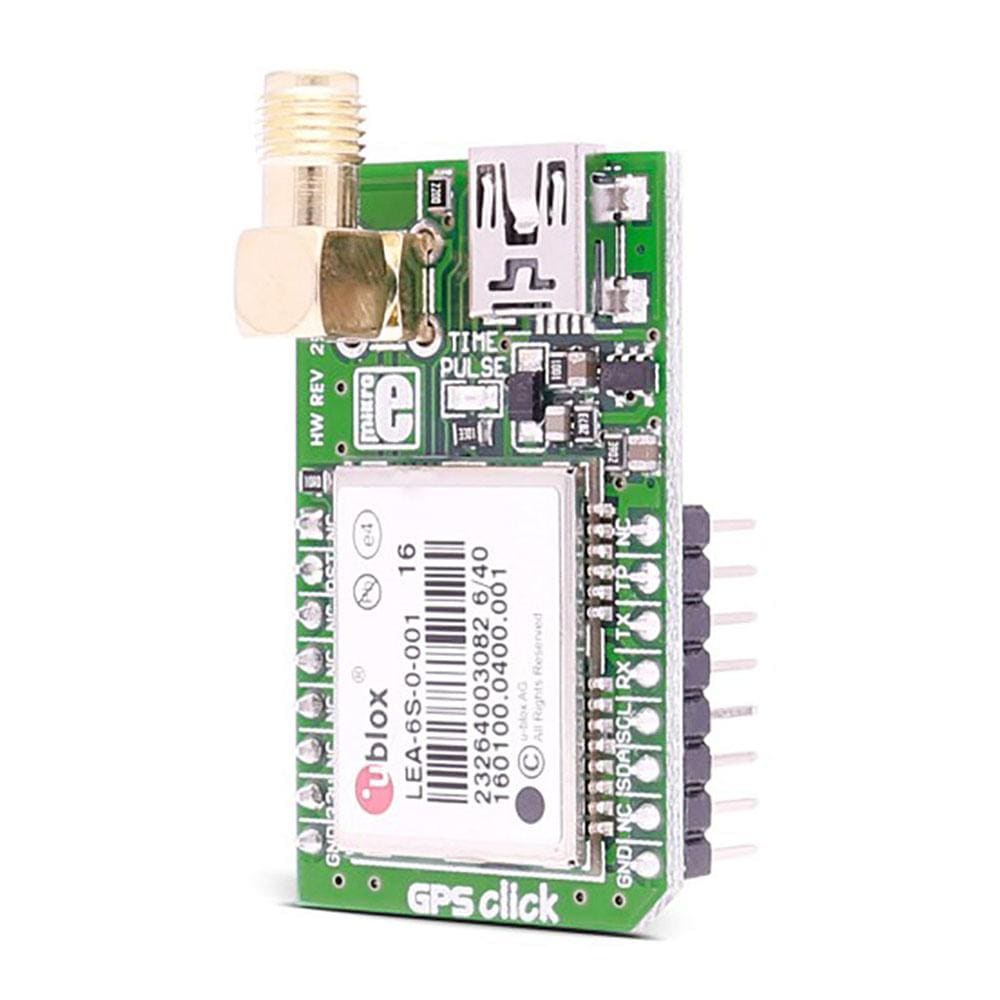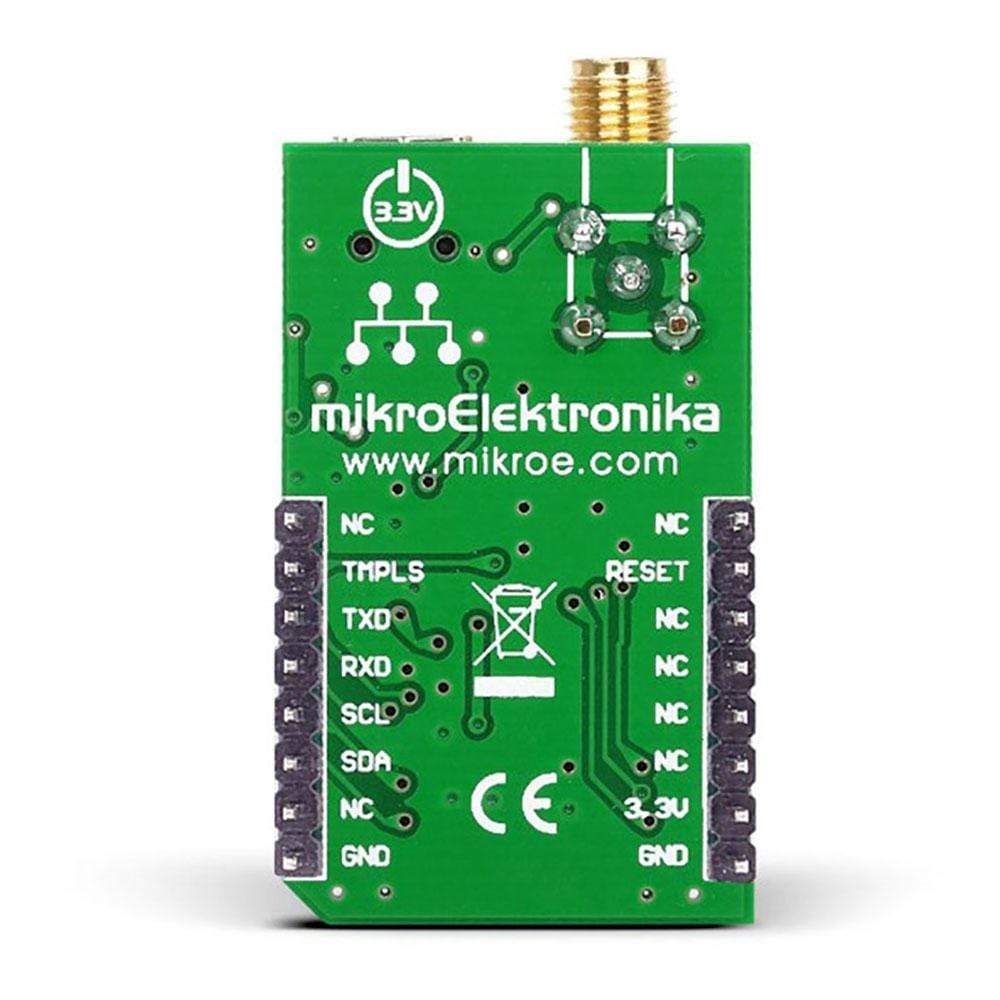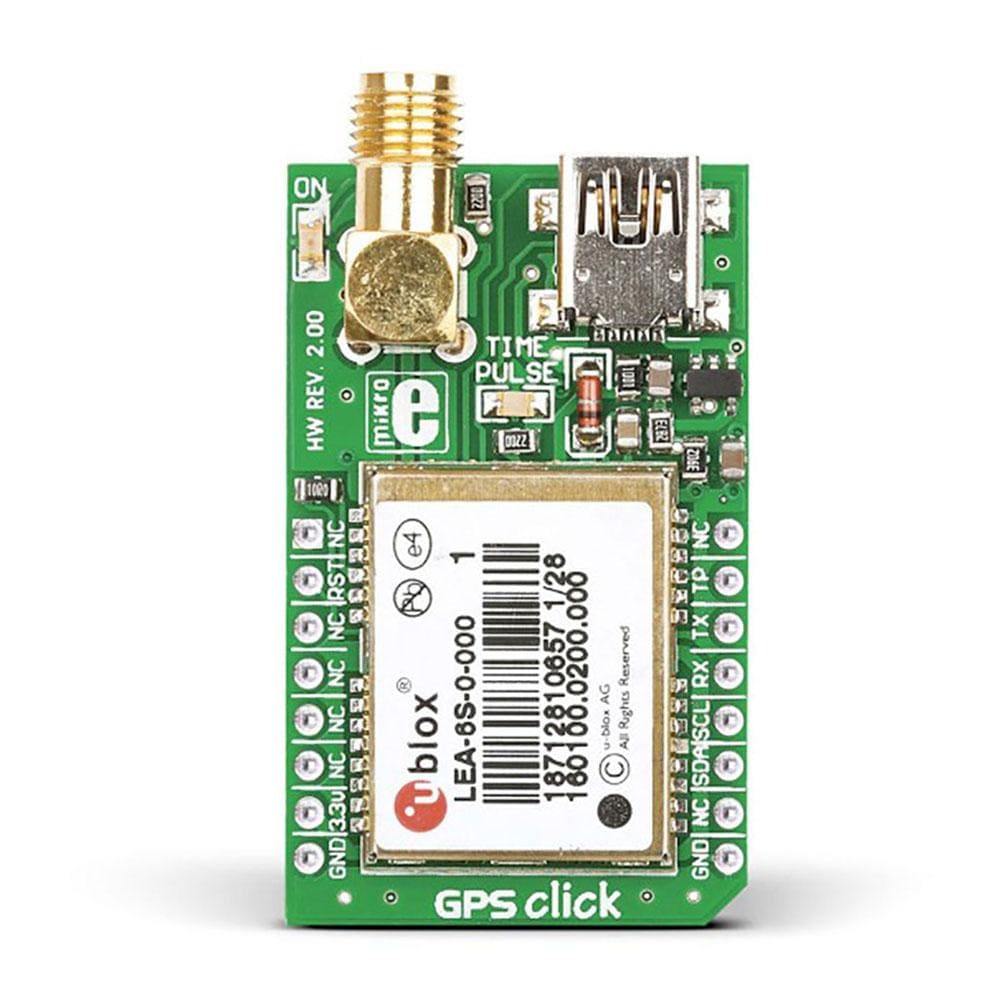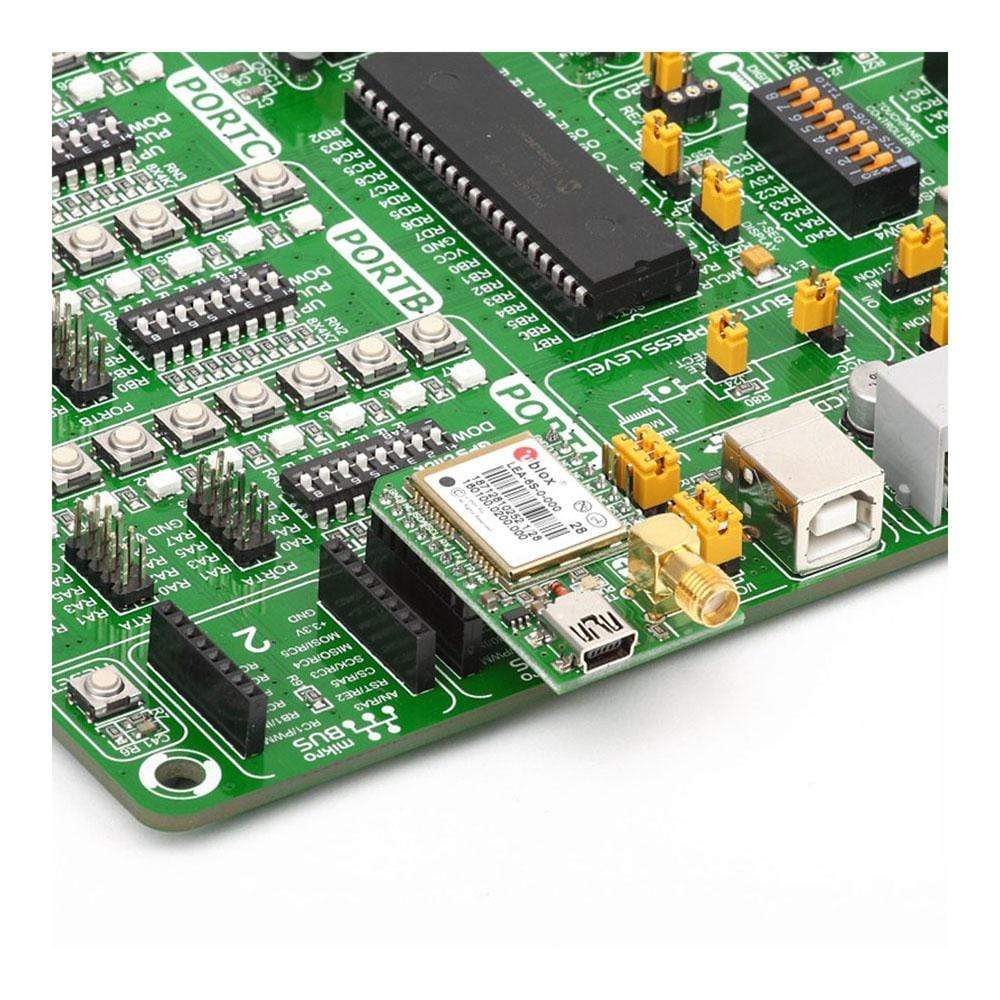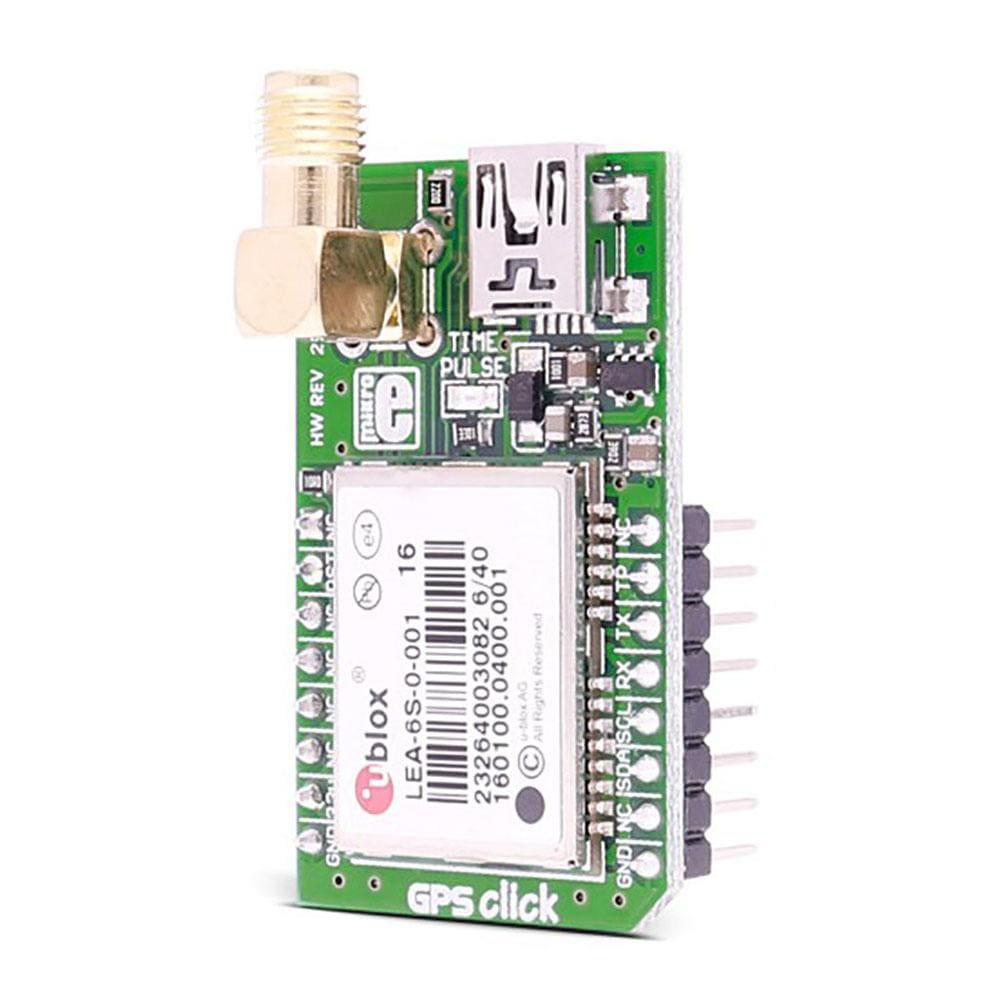
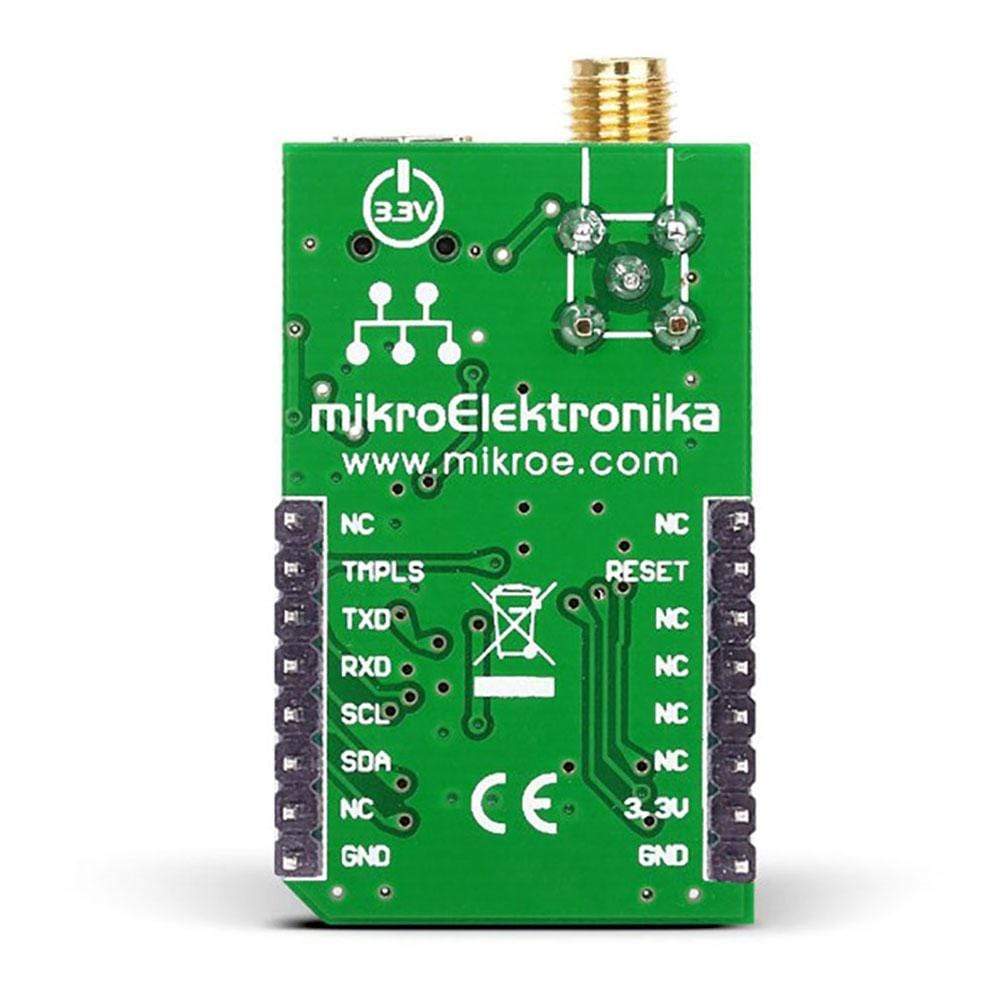
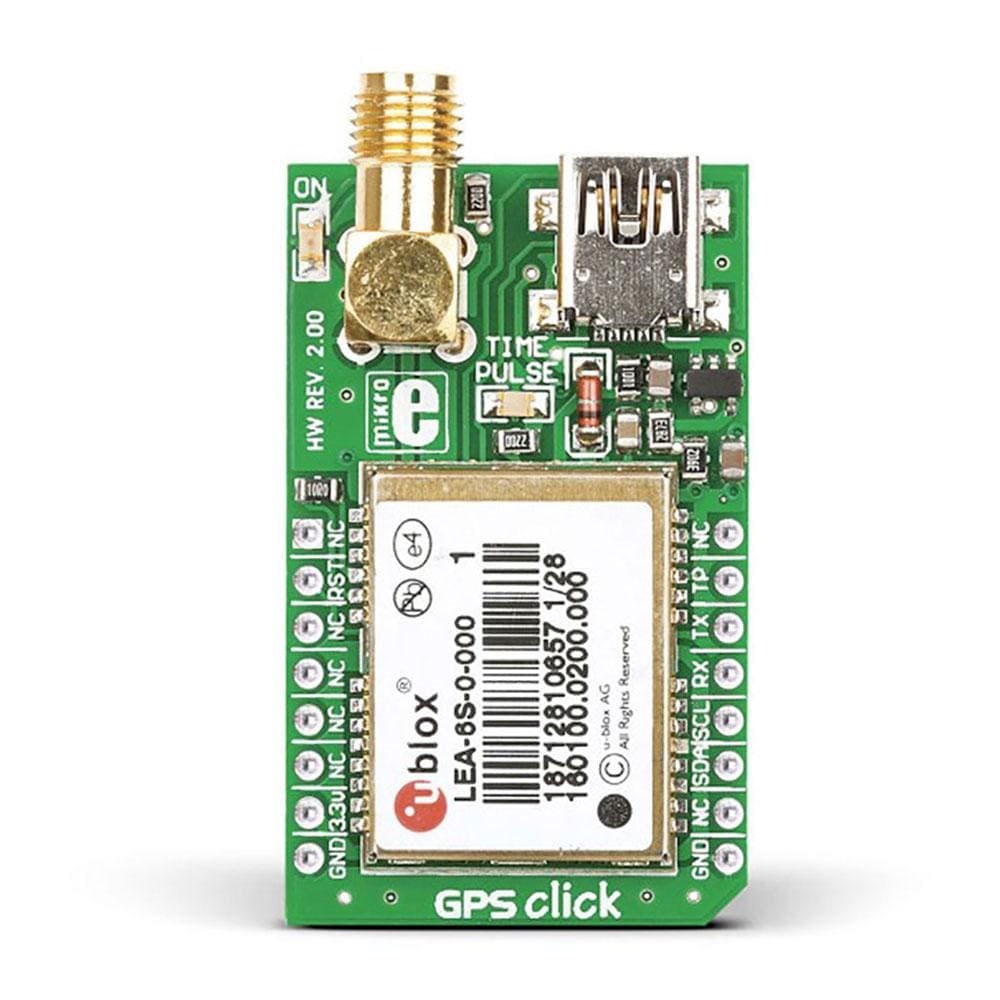
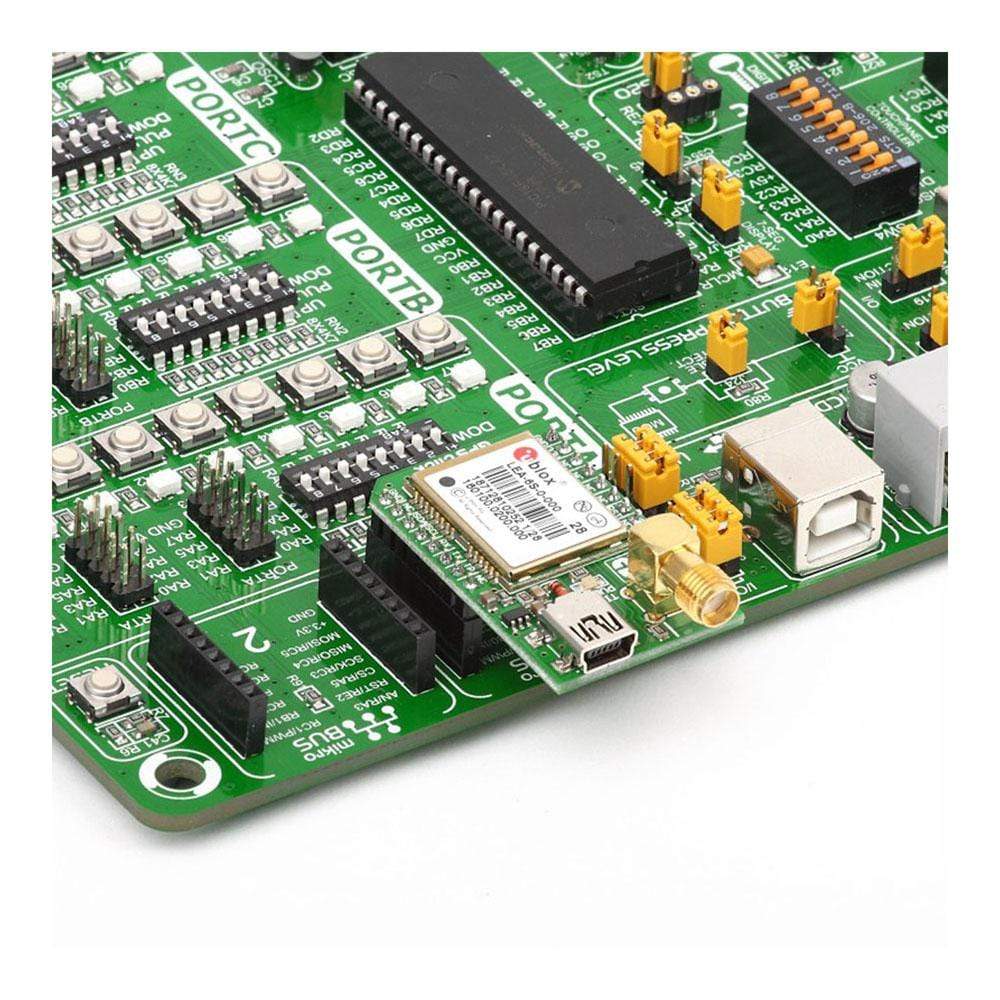
Overview
The GPS Click Board™ is a compact solution for adding GPS functionality to your device. It carries the u-blox LEA-6S high-performance position engine.
The GPS Click Board™ is designed to run on a 3.3V power supply and communicates with the target MCU through UART or I2C interface.
Data can also be acquired through a PC application using the USB connection.
Downloads
Das GPS Click Board™ ist eine kompakte Lösung, um Ihrem Gerät GPS-Funktionalität hinzuzufügen. Es enthält die Hochleistungs-Positionierungs-Engine u-blox LEA-6S.
Das GPS Click Board™ ist für den Betrieb mit einer 3,3-V-Stromversorgung ausgelegt und kommuniziert mit der Ziel-MCU über die UART- oder I2C-Schnittstelle.
Über die USB-Verbindung können Daten auch über eine PC-Anwendung abgerufen werden.
| General Information | |
|---|---|
Part Number (SKU) |
MIKROE-1032
|
Manufacturer |
|
| Physical and Mechanical | |
Weight |
0.034 kg
|
| Other | |
Country of Origin |
|
HS Code Customs Tariff code
|
|
EAN |
8606015073637
|
Warranty |
|
Frequently Asked Questions
Have a Question?
Be the first to ask a question about this.

